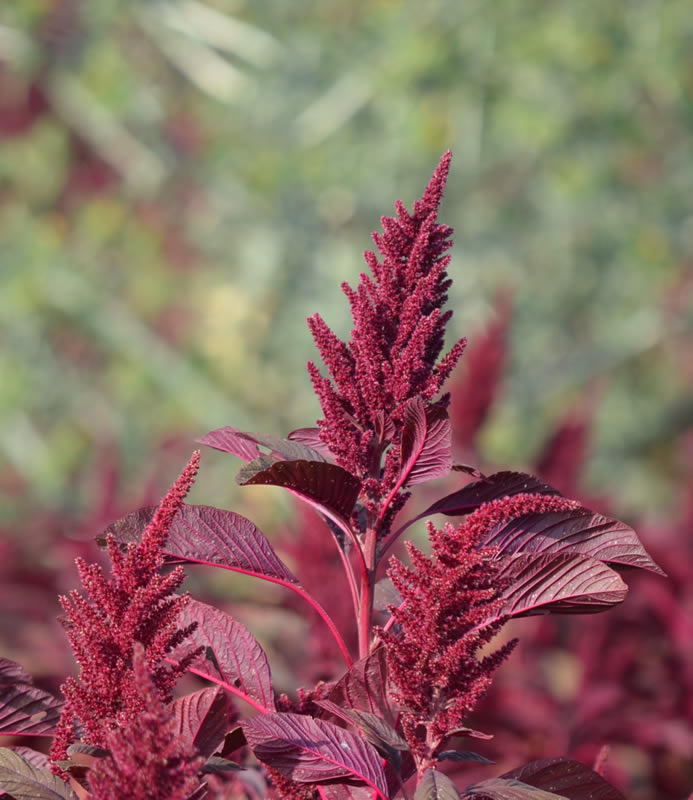Amaranth is a very common pseudo-cereal all over the world. However, not all species (that are very many) are edible. Among the cereal species, the edible and most used ones are Amaranthus cruentus, Amaranthus caudatus and Amaranthus hypochondriacus. Both for climatic reasons and for a greater predisposition to mechanised harvesting, Amaranthus cruentus is the most suitable for cultivation in Europe. Amaranth is an excellent food, with a high content of proteins, vitamins and minerals that make it a product with amazing qualities. It is particularly rich in lysine, an essential amino acid for the human body and normally scarce in cereals. Amaranth seeds can be used to make flours and is ideal for gluten-free products since, unlike most gluten-free products, it has an excellent agglomerating capacity. The potential of Amaranth is not limited to food use. Amaranth oil is, in fact, highly sought after in cosmetics, as it is rich in squalene, which makes it excellent for human skin also in the treatment of ailments, such as psoriasis, atopic dermatitis and acne.
From an agronomic point of view, its phenological cycle is like that of a spring cereal, which is harvested in August-September. After harvesting, the seed can be used to make flour (main use), cream puffs, beer, soups or pressed to extract the oil.
In addition to the many nutritional qualities, Amaranth, with its intense colour, offers a beautiful landscape show, so much so that in the past it was used as an ornamental plant in the gardens of European nobles.
Amaranth is a very common pseudo-cereal all over the world. However, not all species (that are very many) are edible. Among the cereal species, the edible and most used ones are Amaranthus cruentus, Amaranthus caudatus and Amaranthus hypochondriacus. Both for climatic reasons and for a greater predisposition to mechanised harvesting, Amaranthus cruentus is the most suitable for cultivation in Europe. Amaranth is an excellent food, with a high content of proteins, vitamins and minerals that make it a product with amazing qualities. It is particularly rich in lysine, an essential amino acid for the human body and normally scarce in cereals. Amaranth seeds can be used to make flours and is ideal for gluten-free products since, unlike most gluten-free products, it has an excellent agglomerating capacity. The potential of Amaranth is not limited to food use. Amaranth oil is, in fact, highly sought after in cosmetics, as it is rich in squalene, which makes it excellent for human skin also in the treatment of ailments, such as psoriasis, atopic dermatitis and acne.
From an agronomic point of view, its phenological cycle is like that of a spring cereal, which is harvested in August-September. After harvesting, the seed can be used to make flour (main use), cream puffs, beer, soups or pressed to extract the oil.
In addition to the many nutritional qualities, Amaranth, with its intense colour, offers a beautiful landscape show, so much so that in the past it was used as an ornamental plant in the gardens of European nobles.
Would you like to grow amaranth in your farm?
Read our guidelines
on cultivation or contact us
Would you like to grow amaranth in your farm?
Read our guidelines
on cultivation or contact us








